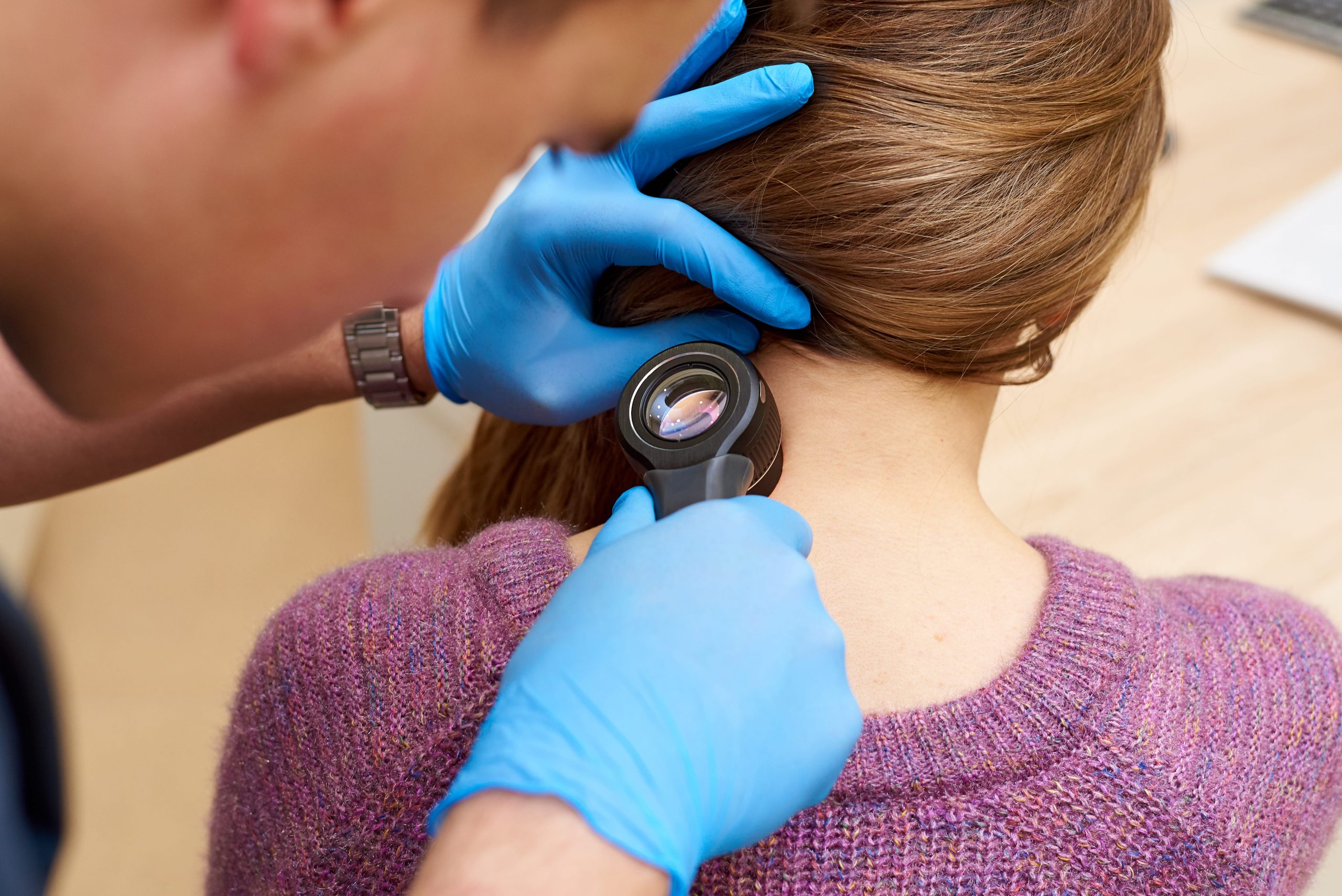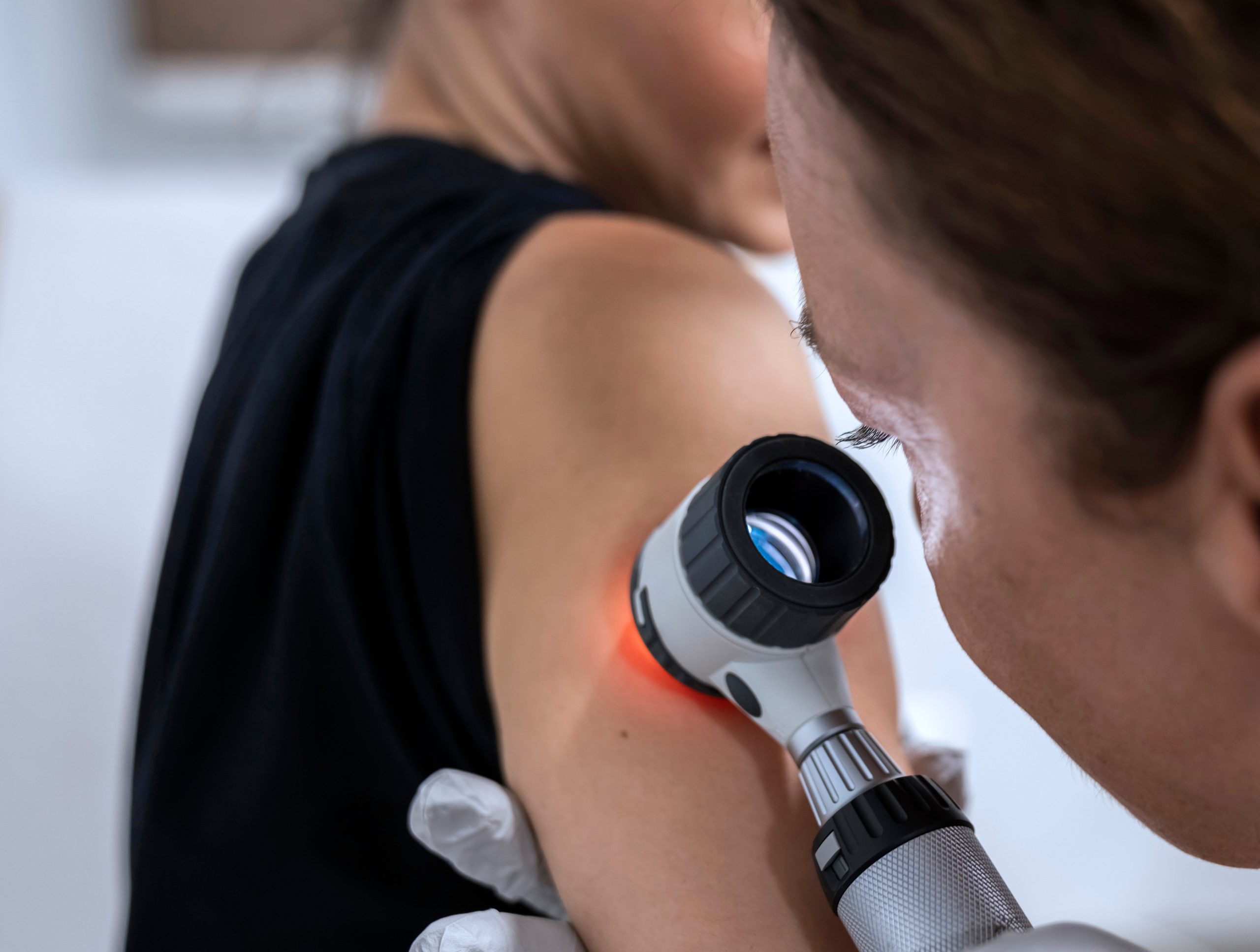By promptly identifying skin cancer, we not only improve life outcomes but also reduce the necessity for more invasive and aggressive treatments. Furthermore, the early detection of Basal Cell Carcinomas and Squamous Cell Carcinomas offers the potential for non-surgical treatments.
Early Detection is Key
The Benefits of Skin Cancer Screening
Skin cancer screening can be a lifesaver, especially in a nation grappling with the widespread prevalence of this disease. In Australia, where the incidence of skin cancer is alarmingly high, early detection becomes our strongest defence. Those who grew up in Australia are more likely to encounter skin cancer than not.
Consider this compelling statistic: approximately 2,000 Australians die from Melanoma each year. However, when melanoma is identified in its early stages, before it leaves the skin’s surface, 5 year survival rates are 99%. This data underscores the profound significance of early detection through good quality skin cancer screening.
By promptly identifying skin cancer, we not only improve life outcomes but also reduce the necessity for more invasive and aggressive treatments. Furthermore, the early detection of Basal Cell Carcinomas and Squamous Cell Carcinomas offers the potential for non-surgical treatments.
Along with primary sun protection, skin cancer screening offers us an opportunity to minimise the generational effects of skin cancer in Australia.


Here's What's Involved in a Skin Cancer Screening
Medical History Review: The screening often begins with a discussion of your medical history. Your skin cancer doctor will ask about any family history of skin cancer, your personal history of skin cancer, and your exposure to risk factors, such as sun exposure and tanning bed use.
Visual Examination: The healthcare provider will visually inspect your skin from head to toe. They will examine your entire body, including the scalp, face, neck, chest, back, arms, hands, legs, feet, and even the areas between your toes and fingers. They will use a bright light and possibly a magnifying glass to get a closer look at any moles, spots, or other areas of concern.
Dermatoscopy: The biggest improvement in our identification of early skin cancers is the use of a dermatoscope. a handheld instrument with a polarising light allowing us to see features underneath the skin. Highly trained skin cancer doctors focus much of their training on the use of dermoscopy. All clinicians at The Skin Cancer Clinic Claremont are highly trained in dermoscopy and we pride ourselves on it.
Mole Mapping: Some high risk patients may have additional imaging done of all their moles. Not every one needs this but it can help to identify new and changing moles of high risk individuals such as people with >100 moles and those with a previous history of melanoma.
Biopsy (if necessary): If the we identify any suspicious lesions or moles during the examination, we may recommend a biopsy. This involves removing a small sample of tissue for laboratory analysis to determine if the lesion is cancerous.
Education and Self-Examination Instructions: We have a major focus on patient education and provide guidance on how to perform regular self-examinations of your skin between screenings. This partnership is essential in getting the best outcomes.
BOOK NOW
Our handpicked team of doctors, nurses and health professionals are here to make a meaningful difference to your life, at every stage of your life.

